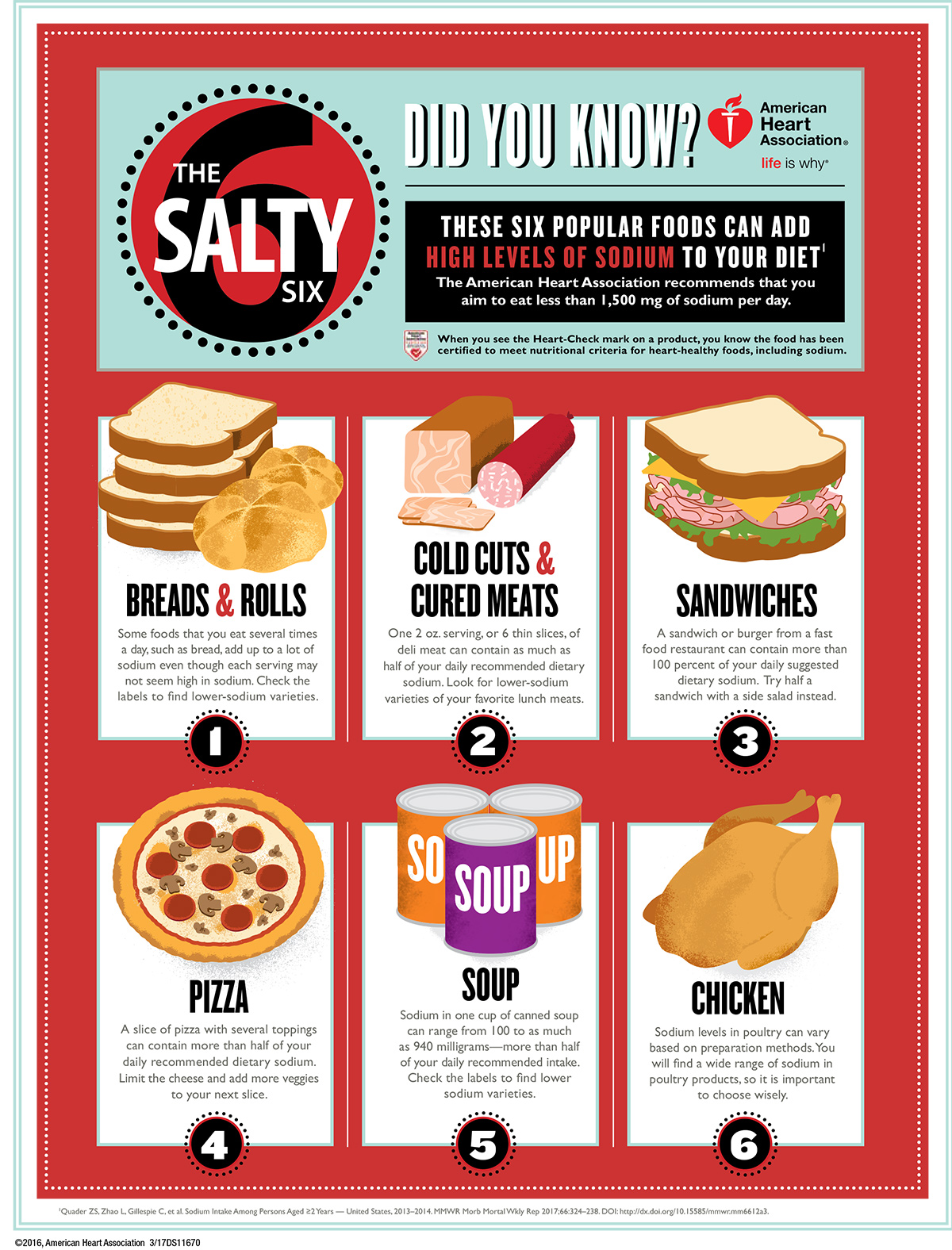Sodium is mainly found in body fluids. It plays a major role in maintaining blood volume and blood pressure by attracting and holding water. Eating salt increases the amount of sodium in your bloodstream and destroys the delicate balance, reducing the ability of your kidneys to remove the water. The result is a higher blood pressure due to the extra fluid and extra strain on the delicate blood vessels leading to the kidneys.
An average adult consumes around 3500 mg of sodium on a daily basis far more than daily recommended intake of 2300 mg. The food you consume in restaurants, eating joints, fast foods & packaged food items that you purchase from super markets such as cookies, condiments, ready to eat foods, frozen chicken/meat & salted snacks carry high amount of sodium. Consuming such food items impacts your blood pressure & increases water retention.
Here are some foods that account for more than 40% of your daily sodium intake & should be consumed in moderation. We are also mentioning swaps to help you reduce salt consumption:
- Breads & rolls: Although breads do not have that much high sodium( 100 to 200 mg per slice) , we consume a lot of them & hence is on the top of the list.
Alternative to bread: Instead of bread or bagel for breakfast, prefer consuming a bowl of oatmeal. Swap dinner breadbasket with whole grains such as brown rice, quinoa, or barley.
2. Pizza: All essential ingredients of outside Pizzas – crest, sauce & cheese contains a lot of salt. Adding processed meats such as pepperoni or sausages further increases salt content.
Alternative to Pizza: Make a homemade pizza using whole wheat, pre baked pizza crust with low sodium pizza sauce & light cheese topped with bell pepper, mushroom &/or other vegetables.
3. Sandwiches: Like Pizza, Sandwiches have high sodium carrying ingredients- bread, cheese, cold cuts, processed meats).
Alternative to Sandwiches: Make your sandwich by taking Brown/multi grain bread & load it with veggies such as tomatoes, lettuce, Avocado. Instead of cheese add peanut butter.
4. Cold cuts & processed meats: Processed meats includes bacon, salami, ham, sausages, hot dog & luncheon meats. Not only, they high in sodium but also contains preservatives which further adds to sodium content.
Alternative to processed meats: Take fresh boiled chicken or turkey breasts to slice up for sandwiches.
5. Packaged/Canned Soups: Some types of canned soups have as high as 940 mg of sodium per serving.
Alternative to canned soups: Look for low sodium varieties. Prefer preparing soup at home adding just enough salt for taste.
6. Burritos & Tacos: Like Pizza, these mexican dishes have high salt ingredients such as processed white flour, cheese salty beans & meat
Alternative to these junk eateries: Swap them with whole grain tortillas & fill it with grilled chicken or mild white fish. Add low salty beans & top it with chopped vegetables.
7. Savory Snacks: These include chips, popcorns, snack mixes & crackers
Alternative to these snacks: Prefer consuming low sodium version of these snacks &/or replace them with nuts/Fibre rich digestive whole flour cookies.
8. Chicken: This popular protein rich food is generally prepared in commercial kitchens which essentially means adding a lot of salt. Having a fried chicken from a restaurant means adding 4 times the sodium of chicken prepared at home.
Alternative: Bake or saute chicken breasts with salt free herbs.
9. Eggs: One egg does not have more than 62 mg of sodium. However it is the cooking method which plays spoilsport. Most fast food egg breakfast sandwiches contains cheese & ham & other condiments & omelettes are full of cheese, bacon & ham.
Alternative: Make poached or without salt omelette or scrambled eggs at home & consume it with multigrain bread & Peanut butter.

The https://thesushantkumar.com website is one of the
best we have found, and the How to optimize sodium content in your diet?
article is very well written and useful!